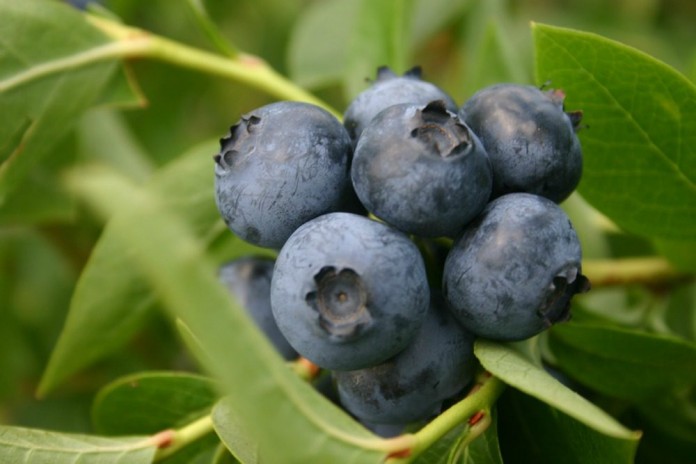PIKETON, Ohio — While blueberries aren’t yet grown in abundance in Ohio, scientists at Ohio State University are working on a multi-year research trial to try to change that.
The demand for blueberries has exploded in recent years thanks to consumers who covet the tiny, sweet, blue fruit for its many health benefits.
Add to that the increasing consumer demand for more locally grown foods, and growers who add blueberries to their lineup of fruits and vegetables can significantly increase their profit potential, said Gary Gao, an Ohio State University Extension specialist and associate professor of small fruit crops at the OSU South Centers.
Local and good for you
“A lot of people are looking to buy foods that are grown or produced closer to home because they want to eat healthier, and many see blueberries, for example, as a poster child for healthy foods,” he said.
“And because blueberries also taste very good, it’s easier for people who want to embrace a healthier lifestyle to eat more and more of them.
Related: New blueberry varieties are a hit
“So we want to help Ohio growers increase their acres of blueberries to try to get more on par to what growers in neighboring states such as Indiana and Michigan are doing.”
$60,000 USDA grant
But to do that, growing conditions have to be right to cultivate the berries, including fostering the right soil conditions, he said.
Expansion of blueberry acreage in Ohio is one of the goals of the two-year, $60,000 blueberry project, which is funded through a U.S. Department of Agriculture specialty crop block grant through the Ohio Department of Agriculture.
Gao said the grant allows him and his colleagues to work on revitalizing Ohio’s current blueberry plantings, to get more growers to add blueberries to their fields to expand blueberry production, and to extend the state’s growing season for blueberries using various techniques including high tunnels.
“Some studies say the use of high tunnels can improve blueberry yields by as much as 50 percent, and we want to see if that is the case here in Ohio,” he said. Hope to expand acreage. One of the main goals for the project, in terms of acreage expansion, is to double Ohio blueberry acreage in three to five years, Gao said.
“Ohio has only about 378 acres of blueberry production, which is very small in comparison to other states,” he said. “But the problem is, blueberries are much more difficult to grow than other small fruits in Ohio because they require very acidic soil, which is not natural to the state.”
Gao said years of blueberry research at Ohio State have shown that blueberries can be successfully grown in Ohio.
Solid returns
Although blueberries are more challenging to grow in the region, the return on investment is well worth the effort, Gao said.
For example, a grower who produces 3,000 pounds of blueberries per acre (which is about average for Ohio) and earns $5 a pound can see $15,000 per acre in gross revenue, he said.
That compares to the $8,000 to $10,000 per acre needed for a new grower to get started, which includes soil preparation, blueberry bushes, irrigation setup, materials and labor.
Introductory workshop
Growers or would-be growers can get detailed information on how to grow blueberries in Ohio during an introduction to commercial blueberry production workshop on June 14 from 6 p.m. to 9 p.m. at the OSU South Centers, 1862 Shyville Road, Piketon.
The program, which is open to the general public and costs $10, will feature information on how to improve the soil, which blueberry varieties grow best in Ohio, how to improve drainage and how to install trickle irrigation. Growers who are interested in getting started in blueberry production are encouraged to call the OSU South Centers at 740-289-2071, ext. 223.
Diversification
“Adding blueberries to your crops is just another way to diversify and reduce risk,” Gao said “Diversification is even more critical than ever this year because of the hard freezes in March and April that damaged peach crops and apple crops in many parts of the state.”










